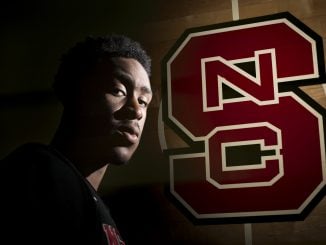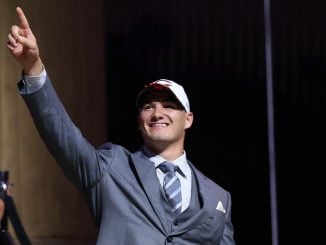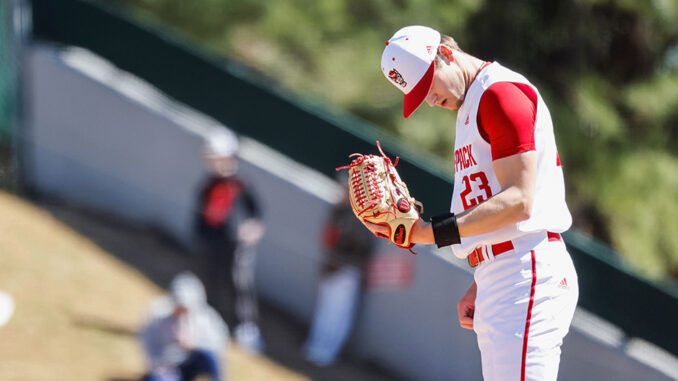
RALEIGH — At some point early in NC State’s season-opening baseball game against Evansville last month, Sam Highfill looked toward his catcher for the sign, something he’s done in every game he’s pitched since Little League.
Only this time, Jacob Cozart didn’t put down any fingers.
It only took a moment for the Wolfpack ace to remember that his team is one of the first nationally to replace the traditional method of calling pitches with a new technology that allows coaches to electronically send signals directly from the dugout.
But that was long enough for the numbers that appeared on the wristband he was wearing to disappear.
“Right before an inning started, I got on the rubber, looked at the catcher and was like, ‘Oh, crap,” Highfill said. “So I looked up and was like, ‘OK, we’ve got to do this again.’”
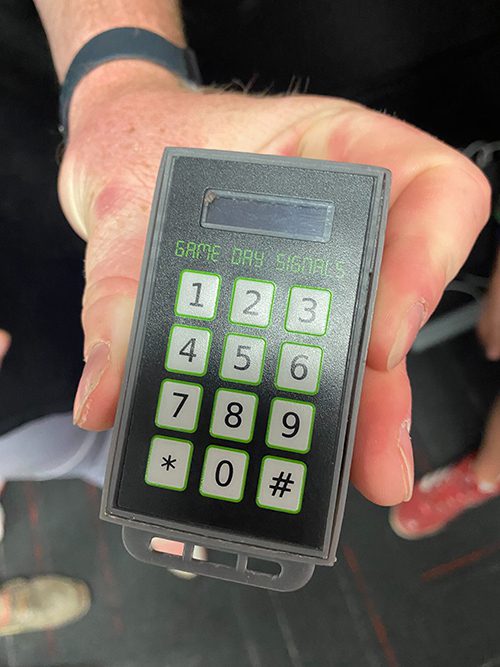
Glancing down at the numbers on his wrist instead of into the dugout or behind the plate has quickly become second nature for Highfill and the other pitchers on the Wolfpack staff.
It’s a routine they’ve quickly embraced.
Not only has the system allowed pitchers to work faster and speed up games, but it has also helped eliminate miscommunication while also making it harder for opposing teams to take a page out of the Houston Astros’ book by stealing signs and tipping off their hitters on what to expect.
Developed by Virginia-based Game Day Signals, a company started in 2018 by former VMI baseball player Chris Cofer and software developer Keith Malay, the new technology allows coaches to communicate with players on the field using encrypted low-band radio waves with a range of about 500 feet.
Signals are sent from a keypad using numbers that flash on a small screen built into a band worn either around the players’ wrist or their belt.
And it’s not just the pitchers and catchers using the technology. State has also outfitted its middle infielders with receivers so that they can correctly position themselves depending on the style and location of each pitch.
“We use a three-number system with one number being the pitch, another being the location and another if we want to put in something like a fake shake, a pitchout or pickoff play,” Wolfpack pitching coach Clint Chrysler said. “I put in three numbers, both the pitcher and catcher see it and there’s no signs, no worries about somebody watching on video, so I like it.
“I think it speeds up the game, it keeps a lot of integrity in the game, and the devices are very easy to program and use.”
The system was first used in 2019 in the Division III Old Dominion Athletic Conference, which was granted an NCAA waiver for testing. The NCAA’s Rules Committee approved Game Day Signals for general use starting this season.
State is one of seven Division I programs — along with ACC rivals Clemson and Virginia, Alabama, Vanderbilt, James Madison and Pacific — to get in on the ground floor of the technology. At least six others, including Florida State and Georgia Tech, have it on back order.
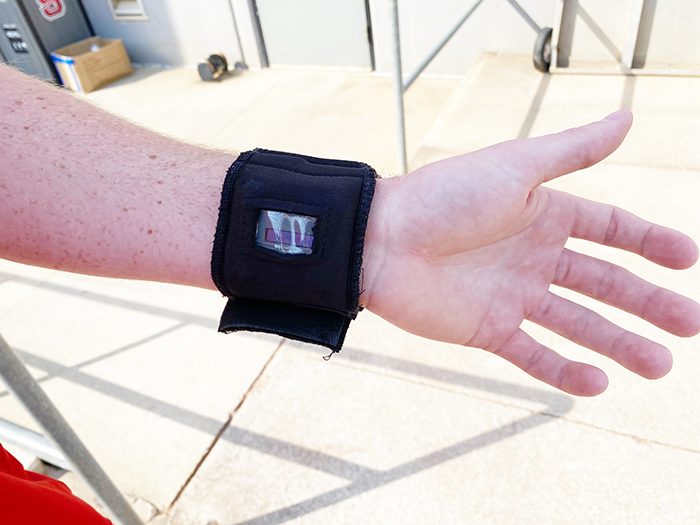
“I was told about it through another pitching coach, and we all ordered it to see if there were any bugs in it,” Chrysler said. “As it turned out we all loved it, so we went ahead and ordered as many as we could get.
“It’s a really neat product. The problem right now is availability because it’s so new, but I think a lot of people want it and eventually will get it.”
Freshman catcher Cozart can attest to the growing interest in the new system.
“I’ve had a couple of guys that have watched me on TV ask me about it,” Cozart said. “They’re really impressed with it and what we’ve done with it. It’s cool to be one of the first teams to use it.”
Cozart said his favorite aspect of Game Day Signals is that he no longer has to go through a series of signs to keep a runner on second base from relaying the pitch to the hitter.
Highfill, the hero of State’s run to last season’s College World Series, is also a proponent now that he’s caught on to the new way of doing things.
“It’s a little strange not getting a sign from the catcher, but it’s not a difficult thing to catch on to,” he said. “I like it because it allows you to work fast and stay aggressive. I think it’s been a good thing.”

